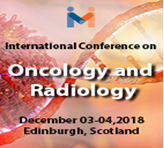Efficacy of KTP Laser Photocoagulation Combined with Cautery as Treatment for Epistaxis in HHT
Background: Hereditary hemorrhagic telangiectasia (HHT) is an autosomal dominant vascular dysplasia characterized by spontaneous, recurrent epistaxis. Epistaxis ranges from sporadic, low volume bleeds to frequent hemorrhages causing anemia. In moderate-severe cases, KTP laser photocoagulation and/or electrocautery are commonly utilized to control epistaxis.
Objective: This observational cohort study aims to evaluate the efficacy of laser therapy combined with cautery as treatment for epistaxis in HHT.
Methods: Chart review and telephone interviews were conducted for all HHT patients at our center who had undergone laser therapy with or without concurrent electrocautery for intranasal lesions from 08/2011 – 12/2014. Data collected from chart included patient demographics, epistaxis severity score (ESS) at time of intervention, and any ESS recorded in the interim. Telephone interviews were conducted at two time points 18 months apart to collect ESS on subjects.
Results: 35 subjects were included in the final analysis, 10 of which had >1 procedure during the time frame. The average pre-operative ESS was 7.1. Post-operative ESS were an average of 2.93 units lower than the pre-operative scores (p<0.05). On average, for each 1-unit increase in pre-operative ESS, the improvement in postoperative ESS increased by 0.72 units (p<0.05). There was no significant difference when comparing age with time between procedures (p=0.38).
Conclusion: Laser therapy combined with cautery reduces epistaxis severity in HHT and provides greater improvement of symptoms in patients who present with more severe epistaxis.
 Spanish
Spanish  Chinese
Chinese  Russian
Russian  German
German  French
French  Japanese
Japanese  Portuguese
Portuguese  Hindi
Hindi 



